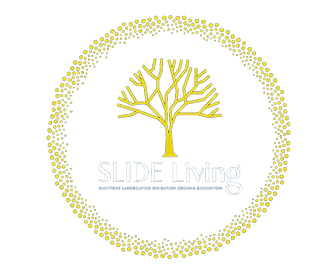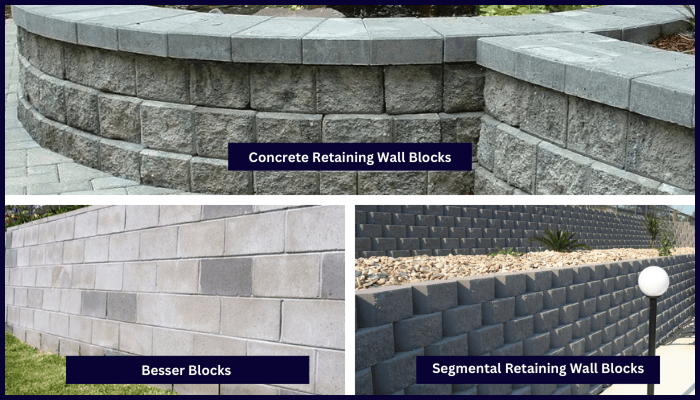Top Solutions For Block Retaining Walls to Elevate Your Outdoor Spaces
Do you have a sloped area, garden beds that need a hand, or just want to give your backyard some pizzazz?
A block retaining wall is just what you'll need. Block retaining walls are very useful and can really make your backyard pop. They hold the soil from sliding around, keep erosion from occurring, and you can use them to create areas such as your garden beds and fire pits.
Whether you are DIY-ing or enlisting the services of the pros to assist, look to this easy-to-follow guide for selecting the ideal wall blocks and maximising your retaining wall.
How Do Block Retaining Walls Work?
Block retaining walls hold soil in place, especially when the land is sloped. They make your yard more usable by creating flat areas for gardens, lawns, or even sitting areas.
They also manage rainwater runoff so that there's no flooding or ponding.; it's all very well-drained. That's to say, they do what retaining walls are supposed to do.
You will find them everywhere, from low walls that retain a bit of earth in a residential yard to tall structures that do the same along a driveway.
Some are straight; others are not, and can event soften a space. Some are bold concrete block walls; others use wall block that is textured to look like a natural rock face.
3 Types of Block Retaining Wall Materials
Not all retaining walls are constructed of the same materials. Here are some top-quality retaining walls to consider:
1. Concrete Retaining Wall Blocks
Advantages of concrete blocks include durability, reliability, and availability in countless types and sizes. They are ideal for constructing vertical and curved retaining walls.
There are blocks that are easy to join and simple to use if you are DIY-ing.
Others, like the Gardenstone and Sydneystone ranges from Aussie block, have a textured finish on both sides, which is ideal for walls that will be visible in the garden.
If you’re after something durable that doesn't require a lot of maintenance, then concrete retaining walls are a great option.
2. Besser Blocks
Besser blocks are a perfect option where strength is a priority. They are solid blocks made of concrete and are generally used for retaining walls that support buildings or other structures.
Though more labour is involved in the installation, their strength is superior. A retaining wall built using Besser blocks can support heavy loads very easily and correct major soil erosion issues.
3. Segmental Retaining Wall Blocks
If you're into DIY projects, you should consider segmental retaining wall blocks.
They are made to easily interlock, which makes them a good choice for a DIY retaining wall system if you want to build yourself without professional help.
The Modernstone® and Norfolk™ ranges of products, for example, give a clean, modern look to a wall, and they come in a wide range of shapes and sizes that can easily be used to form a wall with curves, or steps, and for any kind of raised garden bed.
Additionally, they weigh less than various other concrete alternatives, which is beneficial when constructing retaining walls.
Concrete Sleeper Walls
To construct sleeper retaining walls using concrete, long, heavy-duty slabs (sleepers) are placed between steel posts.
Concrete sleeper walls are stronger than traditional timber or treated pine walls, will not rot, and require very little upkeep.
They are particularly effective for vertical and high-retaining walls. It is also possible to customise them with natural colours or textures to match the look of your outdoor setting.
However, they are not ideal for DIY-ing and require deeper footings.
DIY Segmental Retaining Walls
Considering installing your own retaining wall? You absolutely can—provided that you've got the right tools, have prepared, and can source appropriate supplies.
Choose Easy Wall Blocks
Light materials such as the APC Exclusive DIY blocks are ideal for homeowners. The Garden Stone sloping blocks are very light, simple to stack, and absolutely suitable for small garden walls, planter boxes, or the curved walls that can reach 800mm high.
They are laid down without mortar, and that saves significant time and keeps everything tidy. Additionally, the configuration of the bricks serve to stabilise and neaten everything.
Prepare the Area
First, clear the area and treat with herbicide. Dig down to the appropriate depth—typically between 75 and 250mm, depending on how high your wall will be. Be sure to install a drain system behind the wall so that water doesn't accumulate and overflow in future.
You can then use geotextile material to prevent the drains from being blocked by soil, and align the first row to be completely level.
Design Ideas for Block Retaining Walls
A good retaining wall is not only about doing the job, but also about adding some flair, too! Here are some options to make your wall stand out:
Curved Designs
Curved retaining walls will soften hard edges and are great around garden beds or fire pits. Block walls such as the Arrinastone or Versawall® work easily for curves, corners, and hinged or vertical walls. They’re great if your goal is a natural appearance in the backyard.
Vertical Walls
If you're looking for a clean, contemporary look, opt for vertical retaining walls. They're quite bold and allow for good use of space, especially when you have outdoor areas that you want to keep looking compact and well-organised.
Here, concrete sleeper walls function quite well—in part because they're durable, but also because they can be built to various specifications when concerns about height or pressure arise.
Decorative Wall Features
Combine and coordinate materials, finishes, and colours for a stylish look. Use coping stones and other capping units to finish off a retaining wall and to keep water from getting in.
Natural stacked stone walls or limestone walls also give a rustic, elegant feel to your garden. In short, it's perfect for garden edging or creating zones in your backyard.
Benefits of Hiring Professional Builders
Do-it-yourself is enjoyable, but not necessarily the best choice.
This is particularly true when projects are intricate, when you're working at great heights or when local authorities have mandates that must be met.
Slide Living’s retaining wall contractors are licensed builders and know how to tackle even the most difficult wall construction jobs.
They use only the finest retaining wall materials and follow all the correct engineering specifications, so your wall not only looks great but also lasts for a good long time.
Professionals are also hired to:
• Lower stress
• Produce quicker outcomes
• Assure that the project is completed correctly
If you’re not sure what system or block sizes to choose, Slide Living can assist you in determining your space requirements, selecting appropriate materials, and handling any necessary approvals.
To Wrap Things Up
Block retaining walls are very convenient and look stylish, no matter if you are installing garden walls or addressing sloped areas. They're look great, are long-lasting, and absolutely make your backyard much more functional.
Regardless of whether you're using concrete sleepers, segmental wall blocks or Besser blocks, there are plenty of options to consider.
Whether it's for small retaining walls, garden edges, or large retaining walls for soil, selecting the right retaining wall system for your goals is important.
If you ever feel stuck or confused, rest assured, Slide Living has the knowledge and experience to offer you the support and guidance you need.
Frequently Asked Questions
-
The simplest way to construct a retaining wall on the cheap is typically using blocks of concrete because they are very inexpensive and durable. You might also consider railroad sleepers or a gabion wall – these are good, affordable options too.
-
A block retaining wall is usually less expensive than its concrete counterparts, because the blocks are easier to manage and put in place, making them ripe for do-it-yourself kinds of projects. In terms of ease of use and affordability, consider using retaining wall blocks.
-
Block retaining walls are generally made from concrete blocks, Besser blocks, and segmental retaining wall blocks, all of which are durable, strong, and versatile in application. Material selection is central to the wall's overall effectiveness and longevity.
-
Absolutely, with the right materials and preparation, you can construct a retaining wall as a do-it-yourself project, and that wall can fulfil its function and also look good. To that end, it makes sense to follow a few expert guidelines.
-
In order to maintain your retaining wall, you need to regularly look for any damage, ensure there is proper drainage, and address issues immediately. Also, maintaining the weeds and capping the wall is crucial to keep it solid.
Greg Hair, owner of Slide Living, has over a decade of experience in delivering high-quality landscaping and outdoor living solutions across Albury-Wodonga and surrounding regions.
Known for his attention to detail and great customer care, Greg has transformed hundreds of properties, specialising in everything from fencing, decking and home irrigation.
SLIDE Living is fully licensed and insured, ensuring top-notch workmanship and customer satisfaction on every project.





